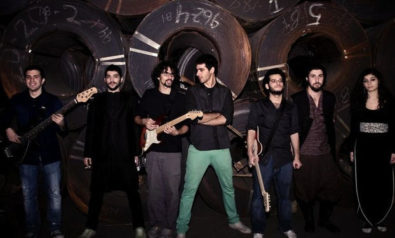
In his work Temps et Récit, Paul Ricoeur considers, among many other issues, the possibility of modifying how historical time is conceived. The focus of this modification is human time; the private and public narrative in which we exist. The notion of history is thus removed from its epistemological domain and returns to its origins, i.e. the narrative of a “who.” The background of the narrative itself—the “sense horizon” to which it belongs—is the main pillar of cultural identity. An event, like the birth of Christ or a certain culture’s calendar, are examples of references that constitute this background. Music has a major role in this process. It is part of the space where the historical Other is presented. Not only is it a universal language; a means to depict and communicate a world representation, but it also gives depth to the way one experiences his narrative in the midst of a collective self-awareness. In other words, there is a sense transmission that sets up a particular dialectic in music, namely, the relation between an interpreted past and an interpreting present. Today, it is rather difficult to talk about “pure” cultural identities. An industrialized mass culture firmly supported by globalization contributes to the fragmentation of a cultural “I.” Paraphrasing Edgar Morin, the ancient homogeneous cultural identities have become “cultural hybrids.” Yet no one can dissociate the US from rock ‘n’ roll or a sitar from Indian music. In fact, they are immediately associated with a symbolic universe that structures their cultural identity—the US and its free, wild, rebellious rock ‘n’ roll or the peaceful, meditative sound of a sitar echoing ancient Vedic chants. This association is rooted in how the collective memory retains a context, a sense, without which the narrative itself would be something unutterable, ineffable. Folk music, for instance, presents itself within this particular frame as a continuous reality or, to push it a bit further, as a continuous cultural “discourse.” One may consider it a relinquished past, something that seems to address us in a fixed manner. Indeed, as said before, collective memory does have fixed events that crystallize the character of cultural identity. However, the past does not lie asleep like sediment in a seabed. It remains present and changes according to a “quasi” hic et nunc perspective. One should say “quasi” because this perspective is really not an achievable one. It only has a potential character. In this sense, one should regard the past the same way the ancient Greeks did, i.e. as something that lies in front of us with the future on our backs. As we walk backwards, the future discloses itself and changes the way the past is interpreted; that which we see continuously and constitutes the pole of identity. It follows then, that no matter how much the world changes, through massively overlapping cultural borders or the false construct that new is always better, the transmission process gives a feeling of belonging to something; it fulfills its purpose as a trace and a view to identity. This can be seen throughout the world in any community of immigrants. Normally in these cases, the diaspora even overstates, if one may say so, the characteristics that define its cultural identity. It is clear how this peculiar sense of belonging transcends any type of phylogenetic evolution. At its core, music is a peculiar lens into cultural identity. Its “focal length,” together with other ethnographic and ethnologic elements, provides a context for lived experiences, generational relationships, and moreover, it “reflects” and catalyzes the dynamics of political and economic environments. Hence, music manifests a fixation which itself is not stable and allows us to have a direct grasp of the idealist nature which underlies cultural identity. It constitutes a major depiction of this positioning and the way it colors the narrative of our lives both at the individual and collective levels. Ultimately, this is what T.S. Eliot describes with incredible elegance in “The Dry Salvages”: “…For most of us, there is only the unattended Moment, the moment in and out of time, The distraction fit, lost in a shaft of sunlight, The wild thyme unseen, or the winter lightning Or the waterfall, or the music heard so deeply That it is not heard at all, but you are the music While the music lasts.”
The image used in this article is the property of Shutterstock. All rights reserved.
For more than 10 years, Fair Observer has been free, fair and independent. No billionaire owns us, no advertisers control us. We are a reader-supported nonprofit. Unlike many other publications, we keep our content free for readers regardless of where they live or whether they can afford to pay. We have no paywalls and no ads.
In the post-truth era of fake news, echo chambers and filter bubbles, we publish a plurality of perspectives from around the world. Anyone can publish with us, but everyone goes through a rigorous editorial process. So, you get fact-checked, well-reasoned content instead of noise.
We publish 2,500+ voices from 90+ countries. We also conduct education and training programs on subjects ranging from digital media and journalism to writing and critical thinking. This doesn’t come cheap. Servers, editors, trainers and web developers cost money.
Please consider supporting us on a regular basis as a recurring donor or a sustaining member.
Support Fair Observer
We rely on your support for our independence, diversity and quality.
Will you support FO’s journalism?
We rely on your support for our independence, diversity and quality.









